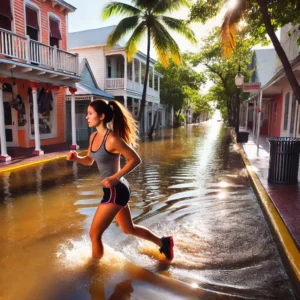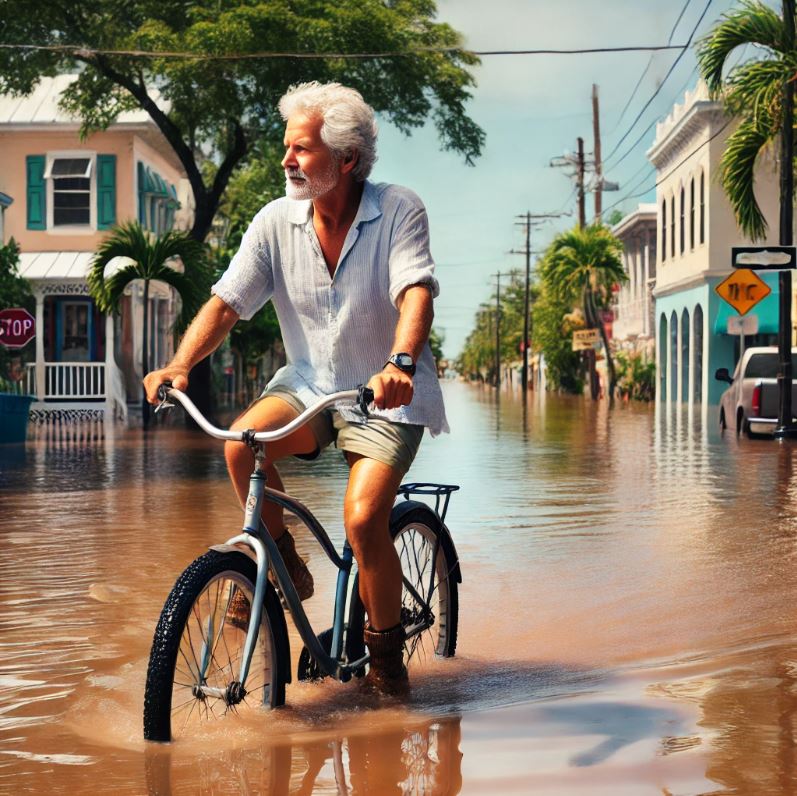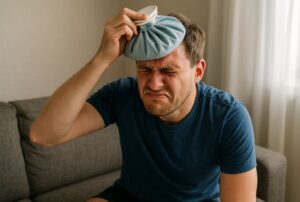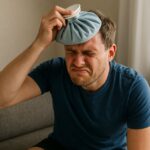Share this post
Floodwater’s Hidden Health Risks Explained by Dr. Jason Pirozzolo
When it rains, it pours—a common saying in Florida that becomes all too literal when residents find themselves wading through flooded streets after heavy storms. Beyond the immediate inconvenience and property damage, floodwaters pose hidden health risks that are often underestimated. According to Dr. Jason Pirozzolo, a board-certified physic ian and urgent care expert, exposure to contaminated floodwater can lead to serious health problems. “People assume it’s just rainwater, but in reality, it’s often a dangerous mixture of bacteria, viruses, and industrial runoff,” explains Dr. Pirozzolo.
ian and urgent care expert, exposure to contaminated floodwater can lead to serious health problems. “People assume it’s just rainwater, but in reality, it’s often a dangerous mixture of bacteria, viruses, and industrial runoff,” explains Dr. Pirozzolo.
Hazardous Water
Floodwater frequently carries a toxic blend of harmful agents, including bacteria, viruses, parasites, and even hazardous chemicals. Direct contact with floodwater or its lingering effects can result in a range of health issues, such as gastrointestinal illnesses, skin infections, respiratory problems, and waterborne diseases. Dr. Pirozzolo emphasizes that understanding these risks and taking proactive measures can help reduce potential health impacts. “The danger isn’t just in wading through the water,” he warns. “It’s what happens afterward when contamination remains in your environment.”
Gastrointestinal Illness
One of the most common health problems associated with floodwater exposure is gastrointestinal illness. Contaminants such as fecal matter from sewage overflow and animal waste can enter the water, posing a significant threat to those who come into contact with it. Symptoms can include diarrhea, vomiting, and abdominal cramps, which may lead to dehydration if left untreated. Dr. Pirozzolo notes, “Children playing in floodwater or people cleaning up without proper protection are particularly vulnerable.” He advises avoiding any ingestion of floodwater and ensuring frequent handwashing. Drinking water should be boiled or sourced from a trusted supply until authorities confirm it is safe.
Skin Infections
Floodwater can also lead to skin infections, especially when open wounds or minor cuts are exposed to contaminated water. The warm, stagnant environment created by standing floodwater becomes a breeding ground for bacteria and viruses. Dr. Pirozzolo stresses the importance of wearing protective clothing and waterproof footwear when dealing with flood conditions. “Even a small cut can turn into a serious infection if it’s exposed to the wrong contaminants,” he warns. Cleaning and disinfecting any wounds immediately after contact with floodwater can greatly reduce the risk of infection.
Respiratory Illnesses
Another common consequence of flooding is the increase in respiratory illnesses due to mold growth and airborne allergens. Once floodwaters recede, damp environments become ideal for mold proliferation. Individuals with pre-existing respiratory conditions, such as asthma or allergies, are particularly at risk. Dr. Pirozzolo advises, “Mold can remain long after the water is gone, so it’s crucial to remove damp materials and thoroughly ventilate your home.” Using an N95 mask during cleanup can help minimize exposure to mold spores and other airborne contaminants.
Waterborne Diseases
Floodwater can also harbor waterborne diseases, which are caused by bacteria, viruses, or parasites that thrive in contaminated water. Dr. Pirozzolo highlights leptospirosis as a specific concern in flood-prone areas. This bacterial infection is transmitted through water contaminated with animal urine. “Leptospirosis can cause flu-like symptoms, but in severe cases, it may lead to kidney or liver damage,” he explains. The best approach is to avoid direct contact with floodwater whenever possible. If exposure is unavoidable, wearing waterproof boots and gloves is essential to prevent infection.
Mosquitoes
Even after the immediate flood crisis has passed, lingering health risks remain. Stagnant water left behind can attract pests like mosquitoes, which breed quickly and can carry diseases such as West Nile virus and dengue fever. Draining standing water promptly is key to reducing mosquito populations and preventing the spread of these illnesses. “It’s not just about the floodwater itself but what comes after,” says Dr. Pirozzolo. “Eliminating breeding grounds for pests is a vital part of post-flood cleanup.”
Dr. Pirozzolo urges residents to remain vigilant even after floodwaters recede. “Many people breathe a sigh of relief once the water is gone, but that’s when the real work begins,” he says. Ensuring proper sanitation, wearing protective gear, and seeking medical attention for any unusual symptoms are critical steps in staying safe. He also advises staying informed by following updates from local health authorities.
Simple Preventative Steps
Simple steps can go a long way in preventing health issues during and after flooding. Avoid wading through flood  water unless absolutely necessary, and always wear protective clothing. Wash hands thoroughly and frequently, especially before eating or drinking. Boiling water before consumption is essential if contamination is suspected. Properly cleaning and disinfecting any cuts or abrasions reduces the risk of infection. During post-flood cleanup, wearing an N95 mask can protect against airborne mold spores. Disposing of water-damaged materials quickly helps prevent mold growth and reduces the risk of respiratory issues.
water unless absolutely necessary, and always wear protective clothing. Wash hands thoroughly and frequently, especially before eating or drinking. Boiling water before consumption is essential if contamination is suspected. Properly cleaning and disinfecting any cuts or abrasions reduces the risk of infection. During post-flood cleanup, wearing an N95 mask can protect against airborne mold spores. Disposing of water-damaged materials quickly helps prevent mold growth and reduces the risk of respiratory issues.
Public Health Initiatives
Public health initiatives also play a significant role in reducing flood-related health risks. Local authorities often deploy sanitation teams and offer public health guidelines on safe cleanup practices. Dr. Pirozzolo emphasizes the importance of community cooperation in mitigating health risks. “Community efforts to maintain cleanliness and eliminate standing water can drastically reduce the spread of diseases,” he says.
Flooding is more than just a temporary inconvenience; it presents long-term health challenges that require careful management. Dr. Pirozzolo reminds us, “Flooding isn’t just a property issue; it’s a health crisis waiting to happen. With proper awareness and action, we can minimize risks and protect our communities.” By staying informed, taking preventive measures, and working together, individuals and communities can significantly reduce the impact of flood-related health problems.
Want to learn more about protecting your health during natural disasters? Follow Dr. Jason Pirozzolo for future articles offering valuable insights and expert advice.




















